The 1980s marked a transformative era in the automotive industry, characterized by bold experimentation and technological innovation. During this period, automakers shifted their focus from traditional mass production to creating vehicles that served as technical showcases, demonstrating their engineering prowess and vision for the future. These concept cars, often more art than practicality, pushed the boundaries of design and performance, captivating enthusiasts and setting the stage for future automotive advancements. This article delves into 20 notable examples of such vehicles, highlighting their unique features and the impact they had on the automotive landscape.
mod@tech
One thing that everyone has in common is the need to know that someone is listening to what they say. That’s especially true when someone is paying (or willing to pay) their hard-earned money to a company for a product. When I attended the media launch of the first-ever 2016 Ford Explorer Platinum, I learned it was made in response to customers who wanted more luxury features than the Limited model offered. The changes made to the 2025 Mustang Mach-E were led by customer feedback. Now comes news that potential F-150 Lightning buyers who want a more trail-ready model can get the 2026 Ford F-150 Lightning STX.
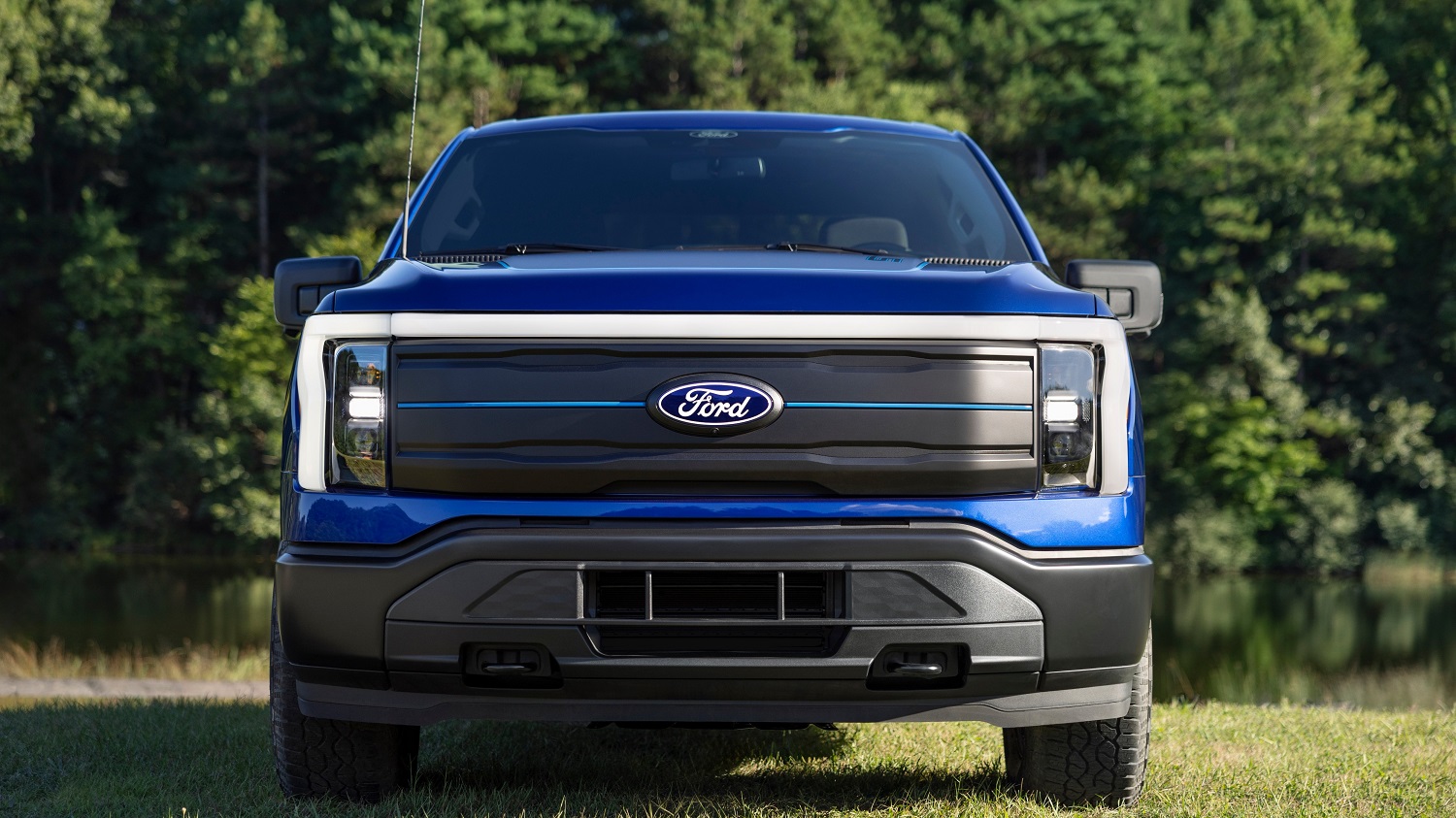
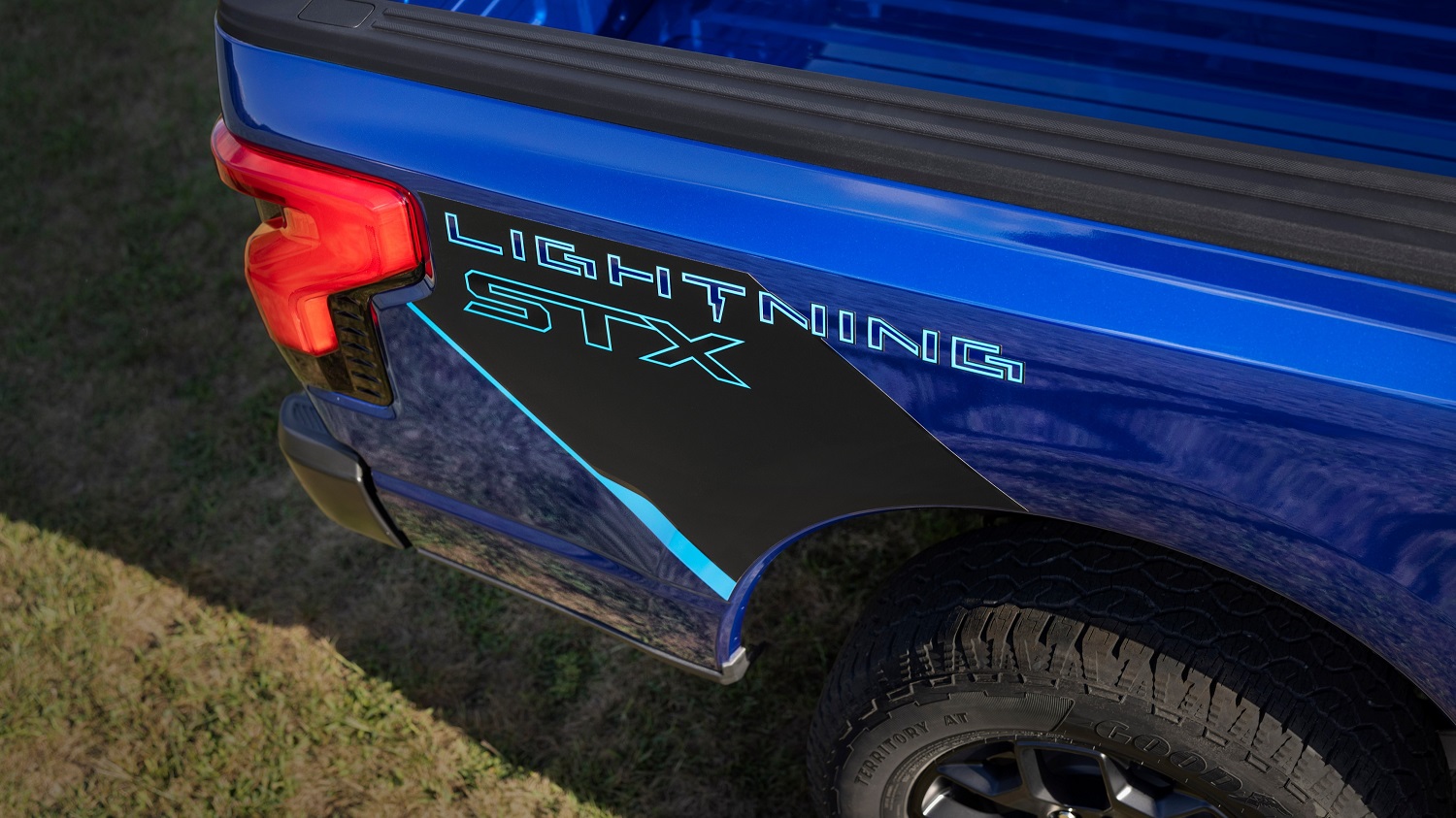
“Customers have been asking for a rugged F-150 Lightning with more range than the standard range XLT,” says Will Marchand, Ford F-150 Lightning product and consumer marketing manager. Instead of adding the STX to the Lightning lineup (which has five trim levels for 2025), Ford made it a replacement for the XLT. To make the STX stand out from its more road-focused siblings, Ford gave it a new grille with a Grabber Blue horizontal center stripe, a black STX hood decal with blue striping, and coordinating bedside graphics.
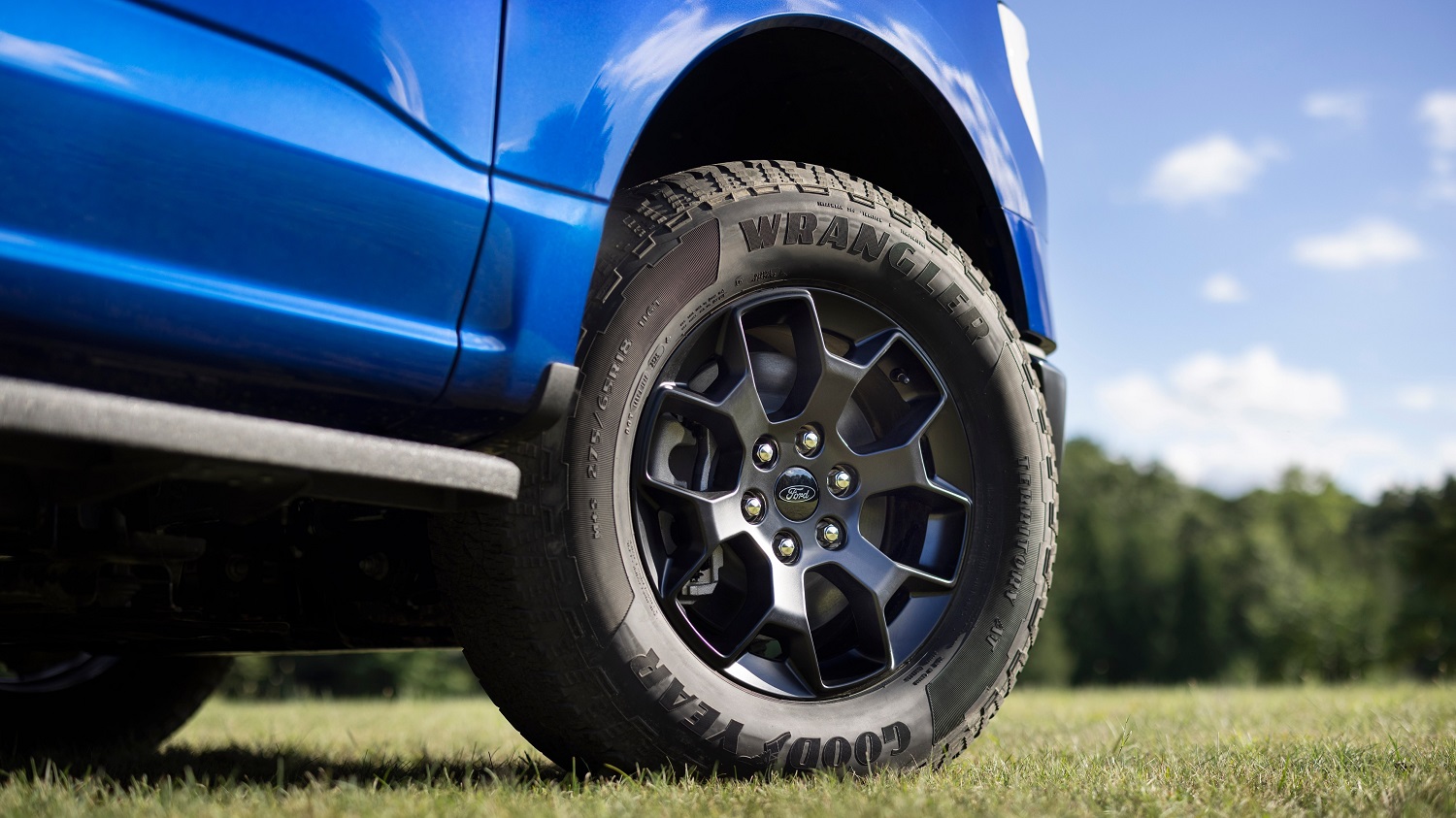
New color options include Argon Blue, Marsh Gray, and Ruby Red Metallic Tinted Clearcoat. If you’re familiar with the F-150 Tremor, you may recognize the STX’s off-road running boards. The black wheels are new to the Lightning and come wrapped in all-terrain rubber. When the path ahead is especially difficult, the standard rear e-locker is there to help the Lightning power through it.
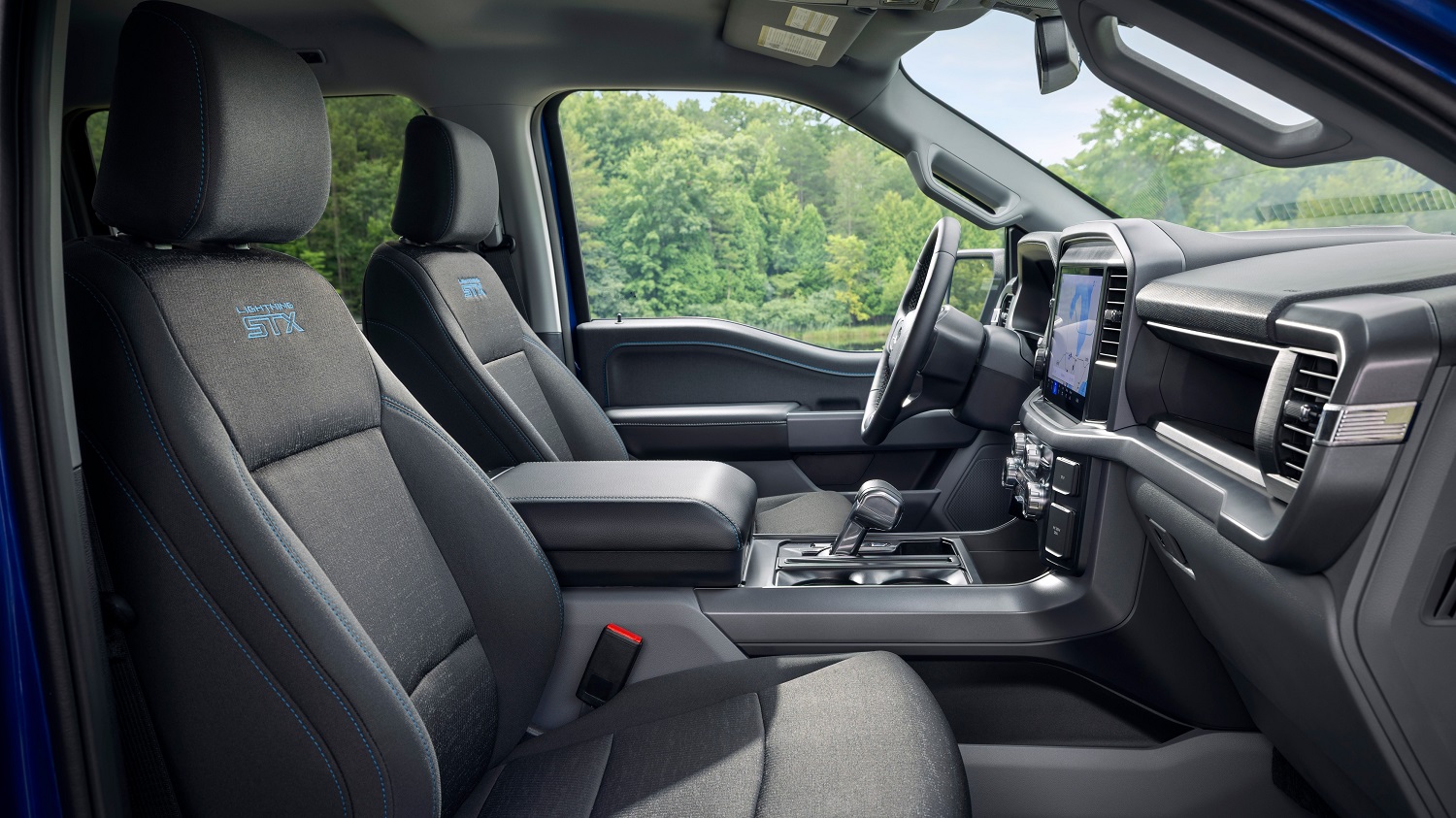
Inside, the cloth seats feature Grabber Blue “Lightning STX” embroidery and stitching. Black vinyl flooring is available for those who intend to take the STX to its natural habitat. A heated steering wheel comes standard. Assuming Ford ports over the 2025 XLT model’s equipment, the STX should also get a 12-inch digital instrument cluster, 360-degree camera, Pro Trailer Hitch Assist, Pro Trailer Backup Assist, Trailer Reverse Guidance, SYNC 4 infotainment with a 12-inch touchscreen, and more.
An extended-range battery pack supplies juice to the STX’s dual electric motors, which should hit Ford’s target of 536 horsepower and 775 lb-ft of torque. Under ideal circumstances, the STX can cover 290 miles on a full charge. If pulling heavy cargo is more important, it’s capable of hauling 2,000-plus pounds of payload and towing a maximum of 10,000 pounds.

How much more does the 2026 Ford F-150 Lightning STX cost over the outgoing XLT? Exactly zero dollars—like its predecessor, it has an MSRP of $63,345. Expect to see the STX in dealerships in early 2026. There’s a good chance you’ll soon spot many on roads and trails because Ford projects that the STX is going to be one of the Lightning’s top-selling trim levels for 2026.
Barrett-Jackson is gearing up for this year’s Scottsdale Fall Auction highlighted by the Select Preview that includes the one-of-one 1963 Chevrolet Corvette Split-Window Coupe (preview) built by Jeff Hayes. Collectors and enthusiasts from around the world will attend this year’s Fall Auction to bid on hundreds of No Reserve collectible vehicles and genuine automobilia pieces set to cross the auction block Oct. 15-18, 2025, at WestWorld of Scottsdale.
“From unrestored classics to SUVs and modern supercars, our Select Preview highlights the diversity of our vehicles that draws bidders from around the globe,” said Craig Jackson, chairman and CEO of Barrett-Jackson. “We take great pride in the fact that all our auctions offer something for everyone. From the custom 1963 Corvette Split-Window built by Jeff Hayes and professionally restored 1972 De Tomaso Pantera (preview) to the 2024 GMC Hummer EV 3X Bandit Outlaw Edition No. 1 (preview), there is no shortage of opportunities to take home the collector car of your dreams.”
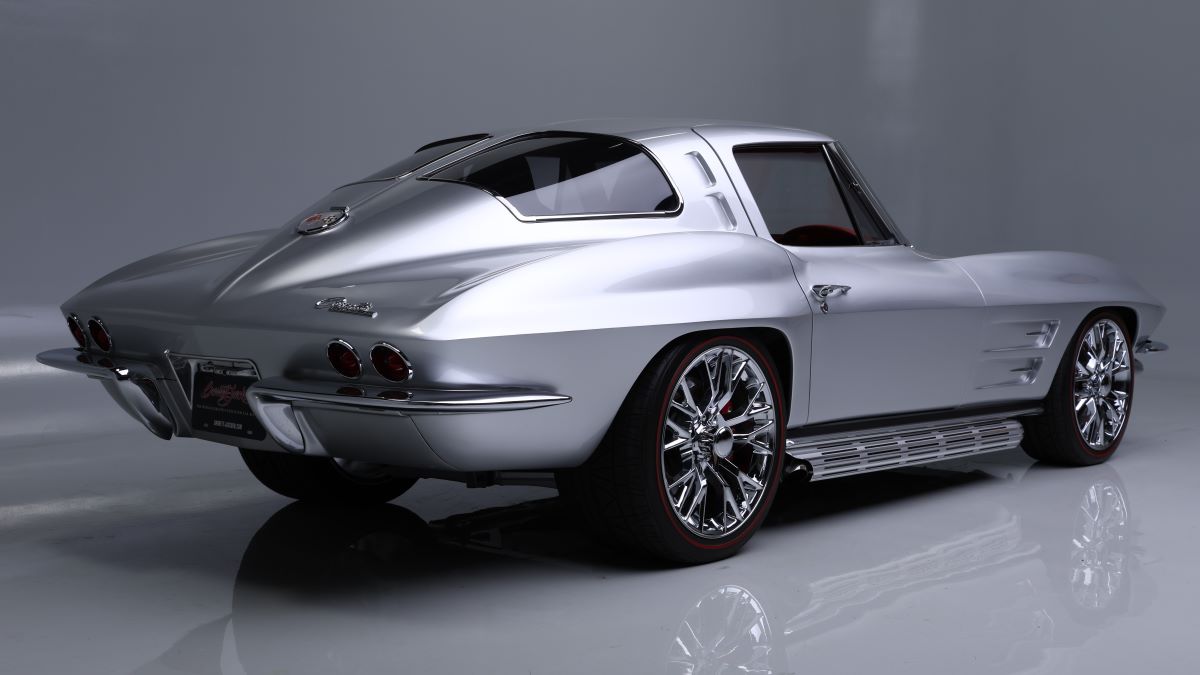
The 1963 Chevrolet Corvette Split-Window Coupe (preview) built by Jeff Hayes features a custom-built chassis and is powered by a new GM LS3 Hot Cam engine that produces 500 horsepower. It is finished in silver over a custom red interior and rides on Z06 Corvette wheels measuring 8.5 inches in the front and 12 inches in the rear. The interior features AutoMeter gauges, tilt steering column, power windows, power hood, Vintage Air climate control, and AM/FM radio. A second 1963 Corvette Split-Window Coupe (preview) is finished in the original paint code 923A of Riverside Red with matching code 490C red vinyl seats. It retains the original fiberglass headlight buckets only seen on the very early-build cars and comes with AM/FM radio, clock, tachometer, Soft-Ray tinted windshield and knock-off aluminum wheels.
Classic Ford Mustangs set to cross the block include the officially licensed 1967 Ford Mustang Eleanor Tribute Edition (preview). Hand-built from the ground up using a factory 1967 Ford Mustang, this Eleanor was fully reconditioned and finished in the Midnight Edition reverse paint scheme of Axalta DuPont Black exterior paint with movie-correct 44490 Pepper Gray stripes. Number 57 of 300 units to be built, the 2025 Shelby Super Snake (preview) is powered by an 830 horsepower Whipple-supercharged Gen 4 Ford Coyote 5.0-liter V8 engine paired with a 10-speed automatic transmission. Finished in Shadow Black with Satin Black vinyl stripes, it has 13 actual miles.
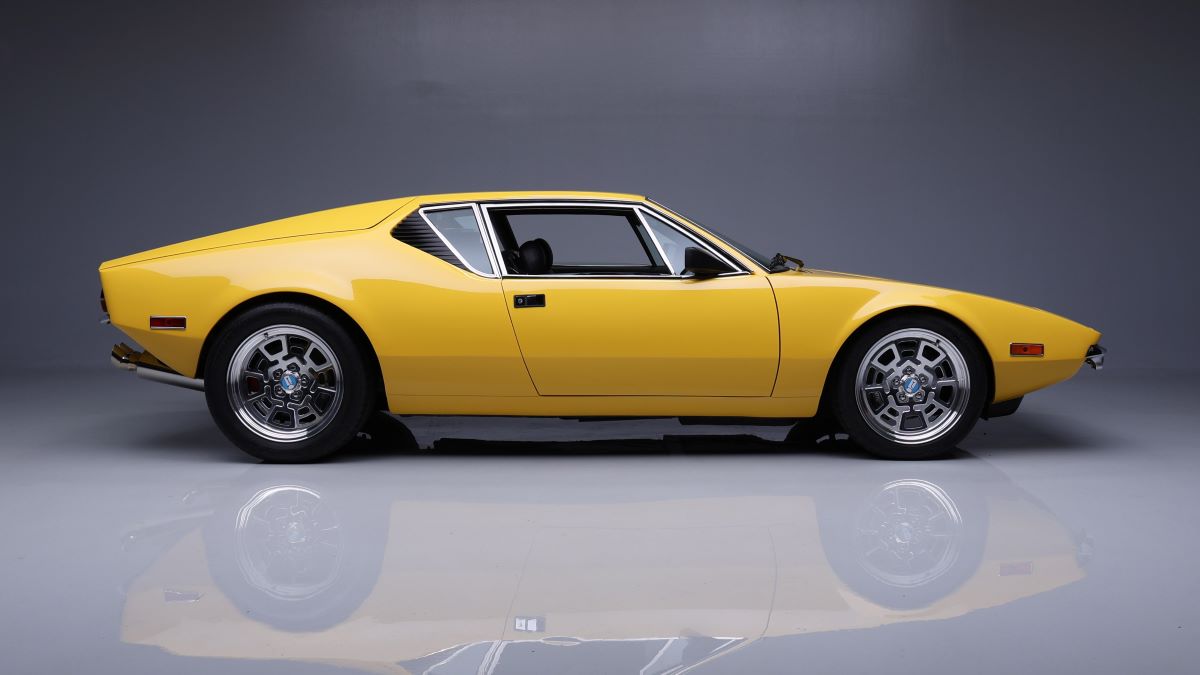
“This is an exciting time to be a collector car enthusiast,” said Steve Davis, president of Barrett-Jackson. “From the professionally restored 1955 Cadillac Series 62 convertible (preview) that represents the post-war American luxury, to the track-ready 2019 Chevrolet Corvette ZR1 convertible with ZTK Track Performance Package (preview), we’re bringing only the best to Scottsdale. I look forward to seeing everyone in Scottsdale this fall to close out the year with the ultimate automotive lifestyle event in one the most beautiful cities in America.”
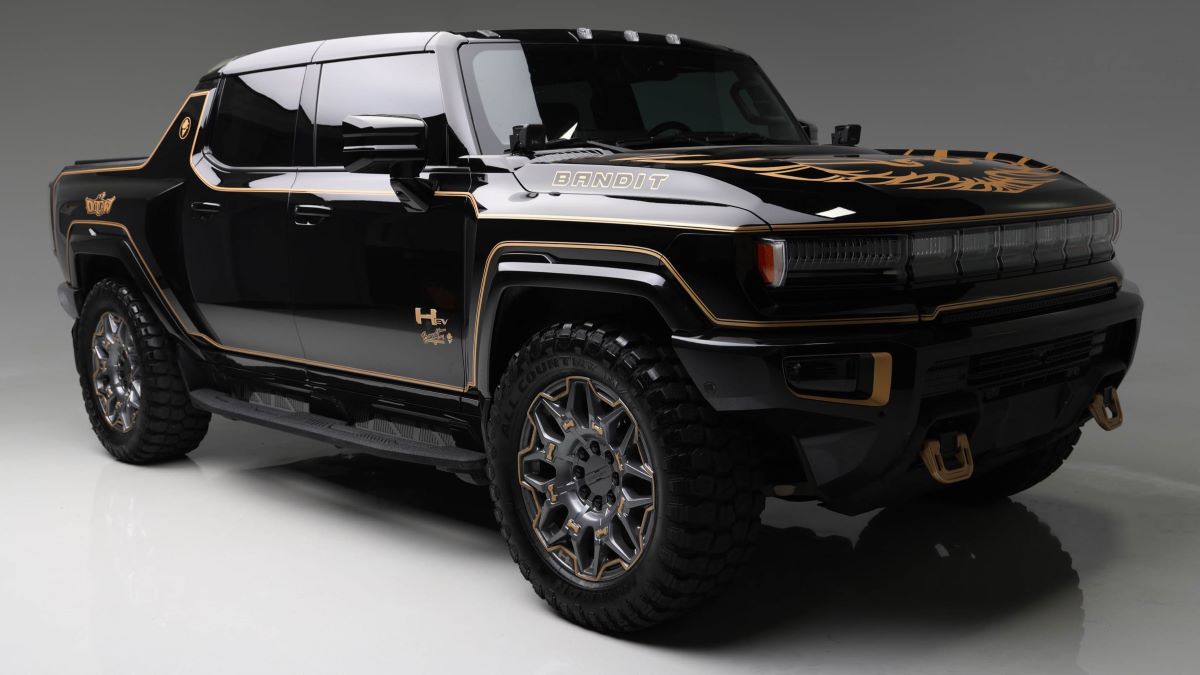
Custom trucks and SUVs will also be a part of this year’s Fall Auction including the 1970 Chevrolet K5 Blazer (preview). Powered by a 525 horsepower LS3 V8 engine linked to a 4L60E 4-speed automatic transmission and a dual-range NP205 transfer case, the custom K5 is finished in Earl Gray and white with deluxe side moldings and tailgate band and has a custom roll cage painted in the body color. The 1964 Chevrolet C10 (preview) is powered by a supercharged, fuel-injected V8 engine with a 700R4 transmission. It is painted in a custom-mixed Candy Apple Red over a silver base and features a fully custom hand-built leather interior using five high-grade hides.
Those interested in consigning their vehicles with confidence for the Scottsdale Fall Auction are welcome to submit their application online. In addition, bidder registration is now open, with three packages to choose from and upgrades for Muscle Lounge access and new Hammer High Top tables. Throughout the four-day Scottsdale Fall Auction, children aged 12 and under enjoy complimentary admission with a paying adult. General admission tickets for students age 13 through college are $10 and adult ticket prices start at $28.
Join Barrett-Jackson’s online conversation with #BarrettJackson and #BJAC on Facebook, X, Instagram and YouTube.
Right now on AutoHunter, you can find this 52,275-mile 1989 Jaguar XJ-S coupe, which is powered by a 5.3-liter V12 paired with a TH400 three-speed automatic. Finished in Signal Red over a Sand leather interior, this British GT car is now offered by the selling dealer In Montana with an original owner’s manual, “The Total Driving Experience” cassette, a clean CARFAX report, and a clear title.
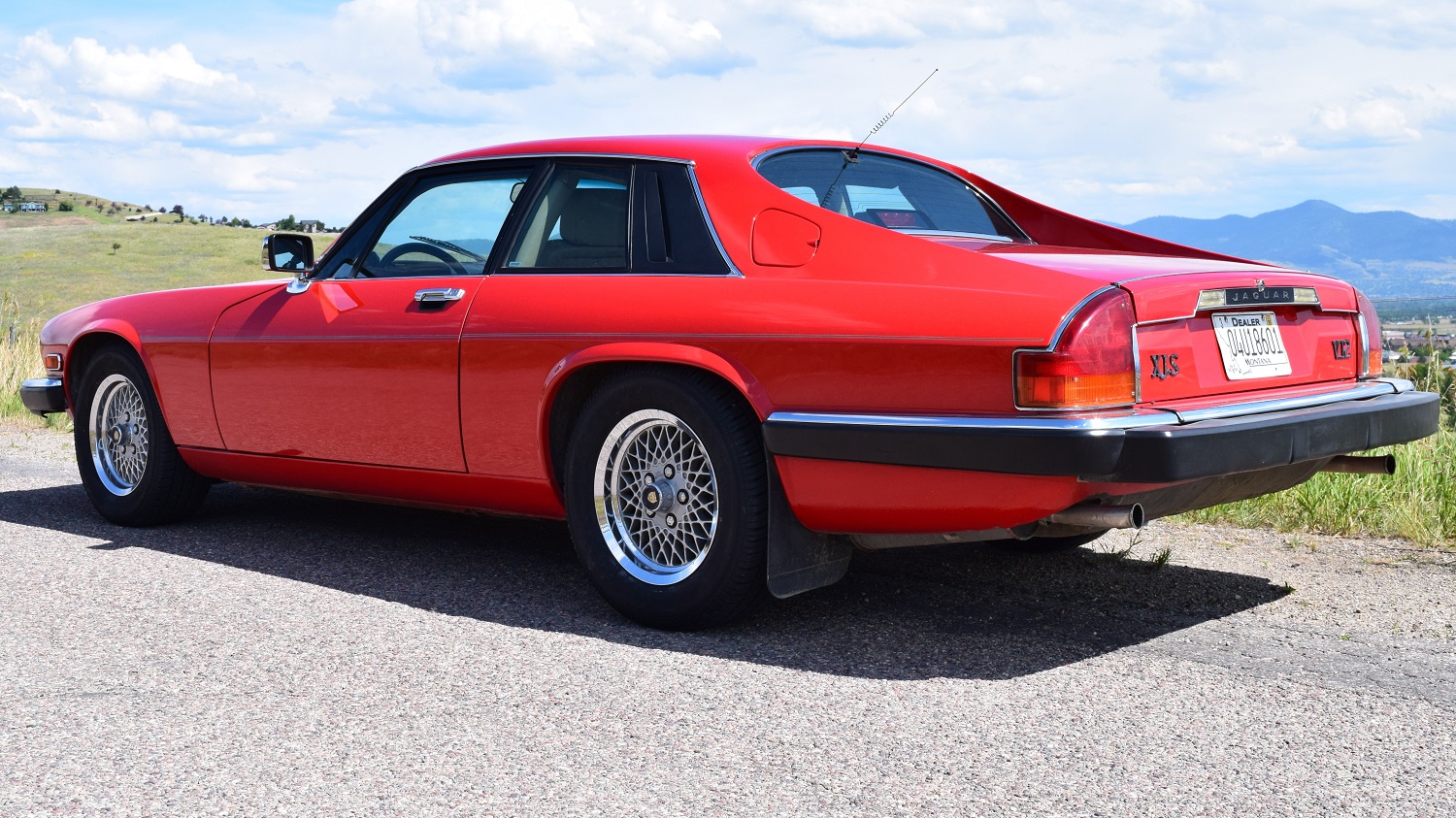
The low-slung Signal Red exterior features fog lights, black bumpers with bright trim, a “leaper” hood ornament, bright mirror caps, rear flying buttresses, and dual exhaust outlets. This cruiser of a cat has 15-inch “lattice” wheels and grips the road with 235/60 Cooper tires; a matching spare is in the trunk.
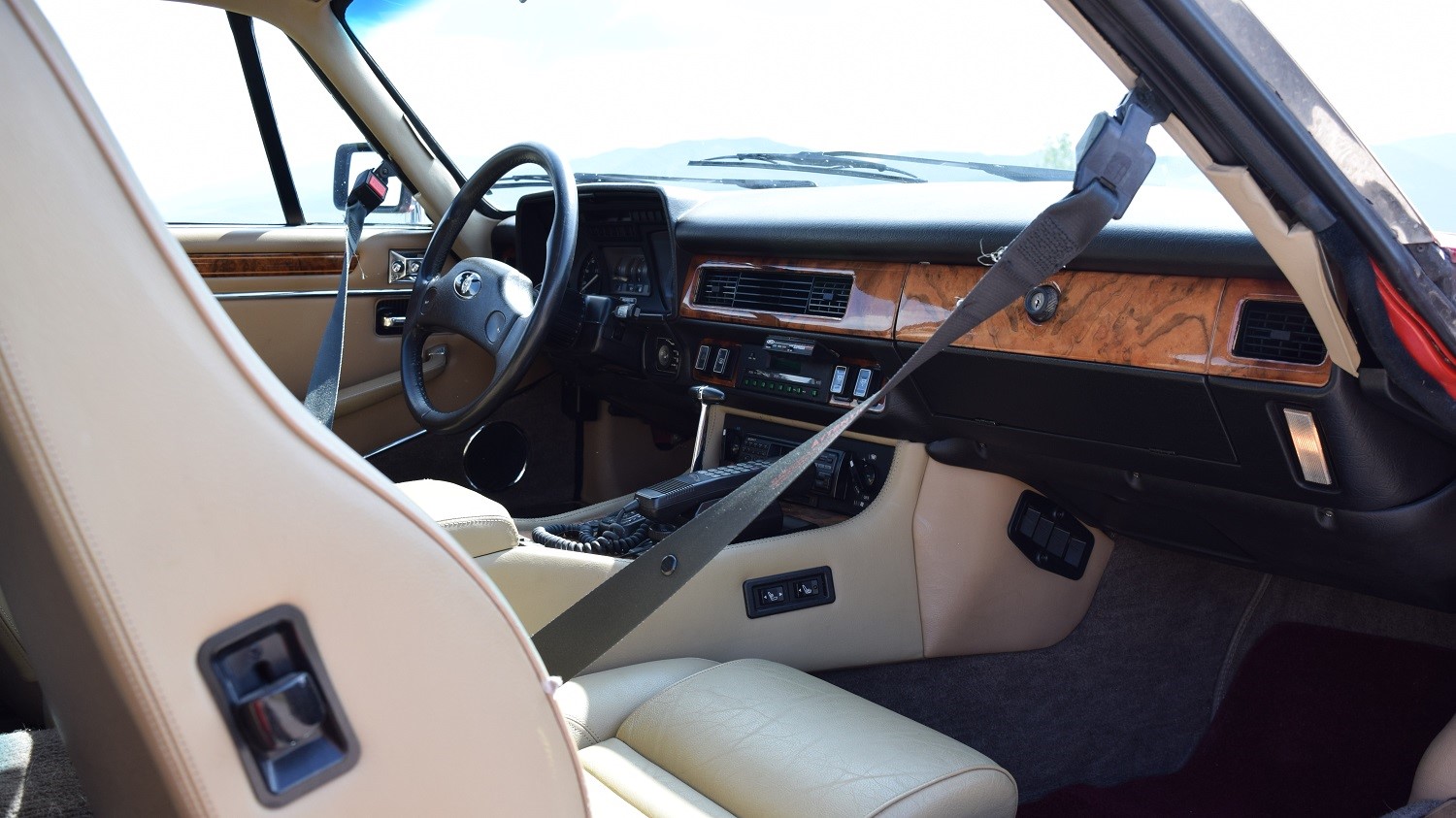
The cabin offers 2+2 Sand leather seating accented with woodgrain trim. Amenities include power locks and windows, power steering, heated front bucket seats, cruise control, air conditioning, and a Sony AM/FM/cassette radio.
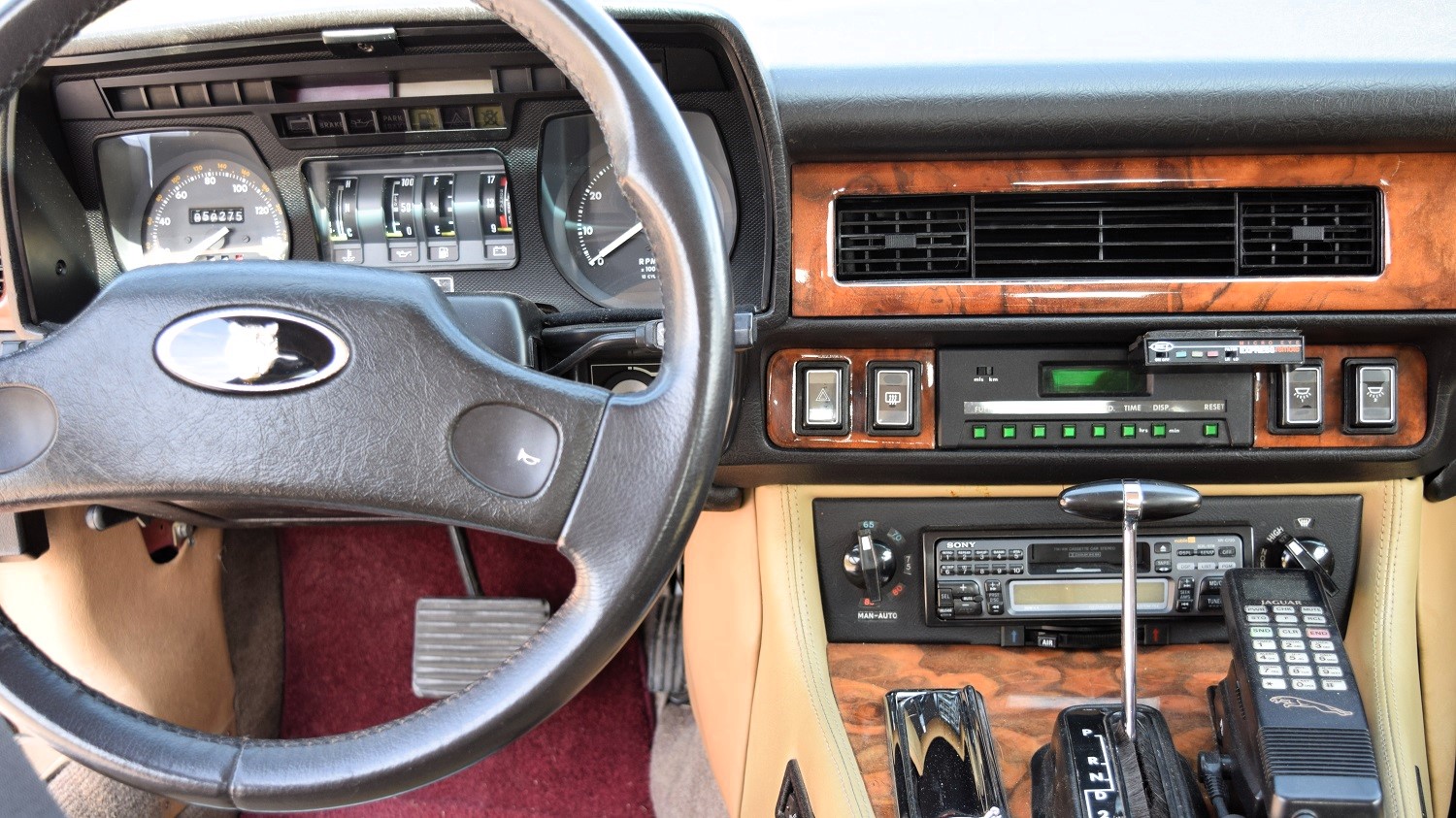
There’s even an integrated radar detector and a factory Jaguar cell phone, although it’s been disconnected.
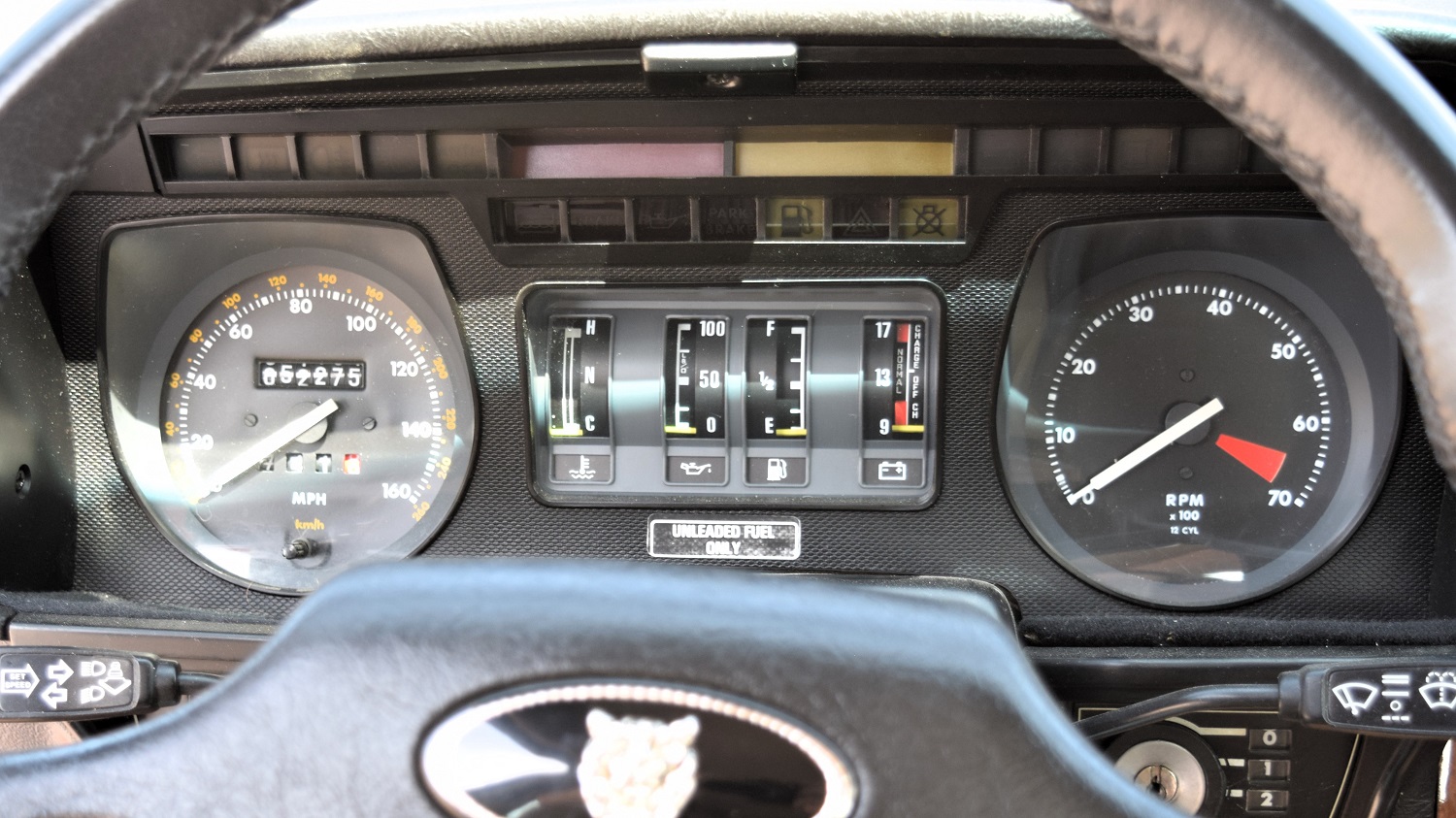
Behind the two-spoke steering wheel is a 160-mph speedometer, 7,000-rpm tachometer, and gauges for the temperature, oil pressure, fuel level, and voltage. The odometer shows 52,275 miles; the most recent CARFAX mileage figure of 51,449 miles was logged in September 2011.
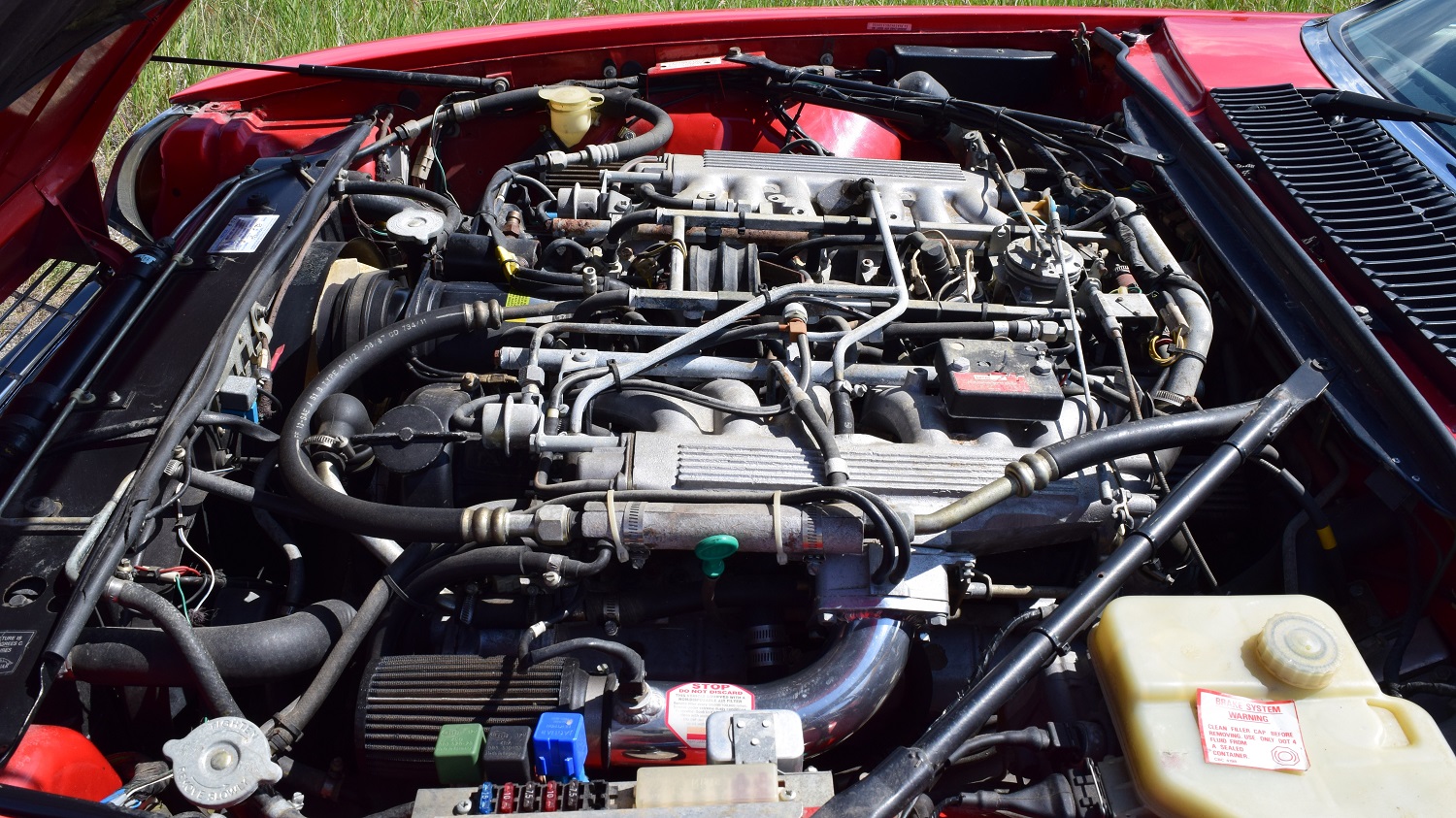
Under the front-hinged hood is a fuel-injected 5.3-liter V12 equipped with dual aftermarket intakes. A TH400 three-speed automatic sends the engine’s power to the rear wheels. Four-wheel power disc brakes help this cat keep all nine of its lives.
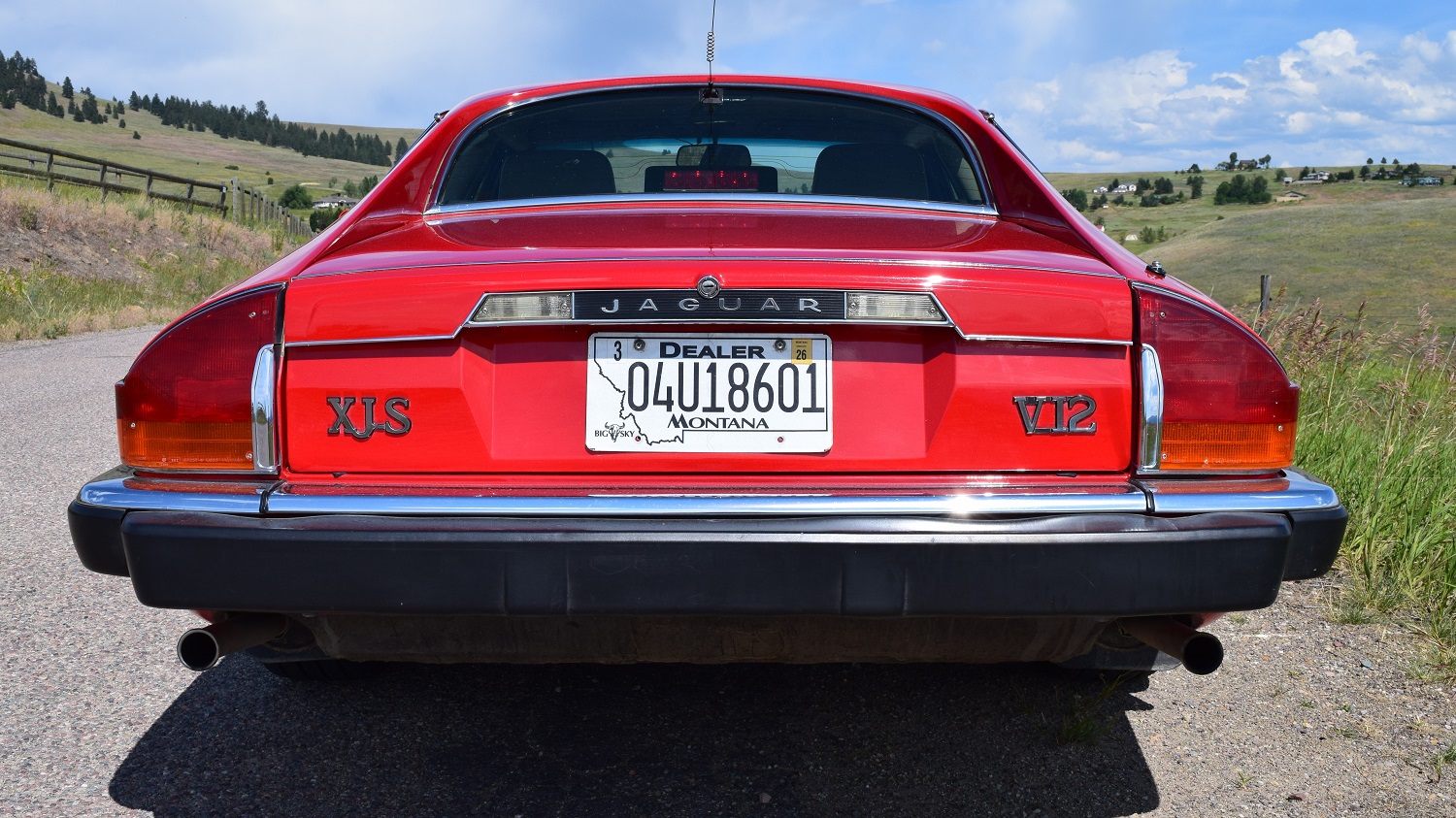
Jaguar is in a state of flux right now, but even once it starts making cars again, none of them will have a V12. You can experience that smooth power in this low-mileage 1989 Jaguar XJ-S coupe, but you have to place the winning bid on it first. Do that before the auction ends on Thursday, September 18, 2025, at 12:15 p.m. (PDT).
Visit the AutoHunter listing for more information and a photo gallery
The 1980s saw the rise of the “mini truck” scene in a big way. Compact pickups became popular platforms for customization when it came to paint jobs, interiors, suspensions, and powertrains. Clubs sprouted up around the country to support the movement, and publications like Truckin’ magazine (which has been out of print since 2019) helped drive the movement. The Pick of the Day is a 1987 Chevrolet S-10 Sport pickup listed for sale on ClassicCars.com by a private seller in Fort Collins, Colorado.
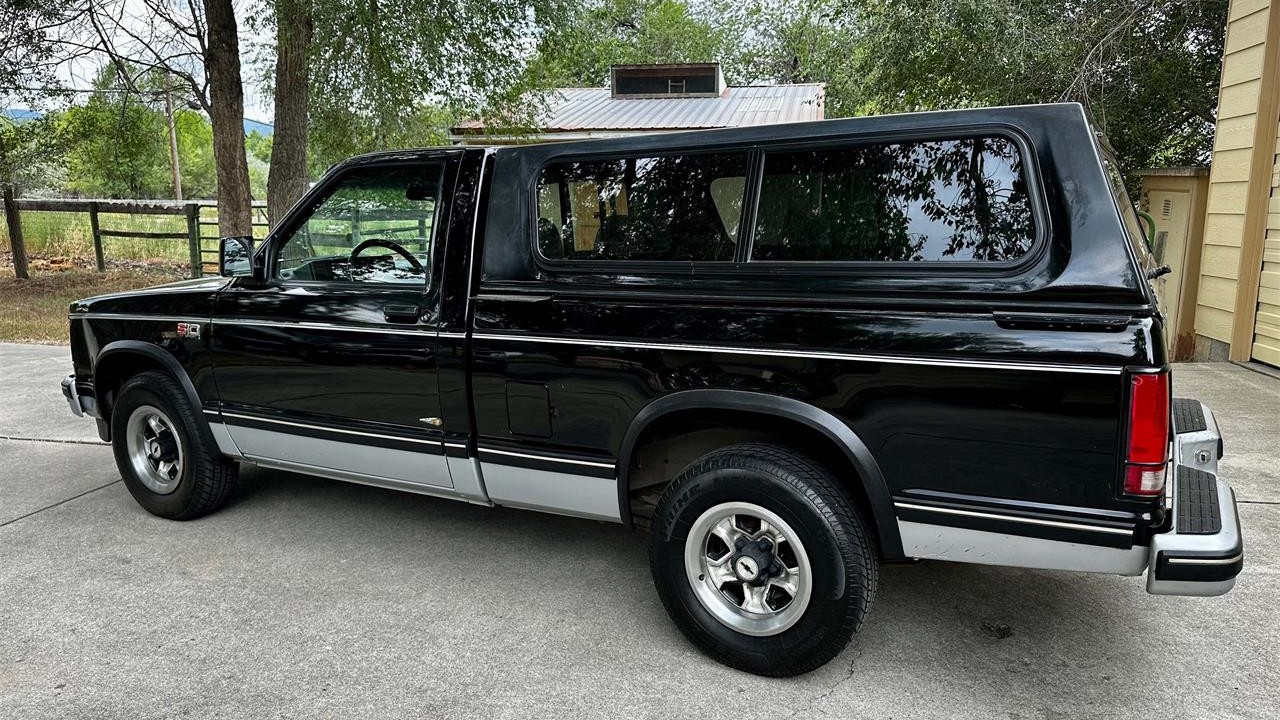
“If you’re looking for a clean, original example of a classic American mini truck, this S-10 is worth a serious look,” the listing begins. “The truck has had just one owner since new—my father—a lifelong mechanic who always took meticulous care of his vehicles.”
The black and gray two-tone exterior is well-kept, and noteworthy features include body side moldings, a color-keyed grille, a camper shell, and a receiver hitch. The interior of the cab is unique in the sense that it is equipped with bucket seats and “TRUCK”-branded cloth upholstery with red accents. It is a sporty arrangement indeed, especially considering the vast majority of trucks during the 1980s had bench seats.
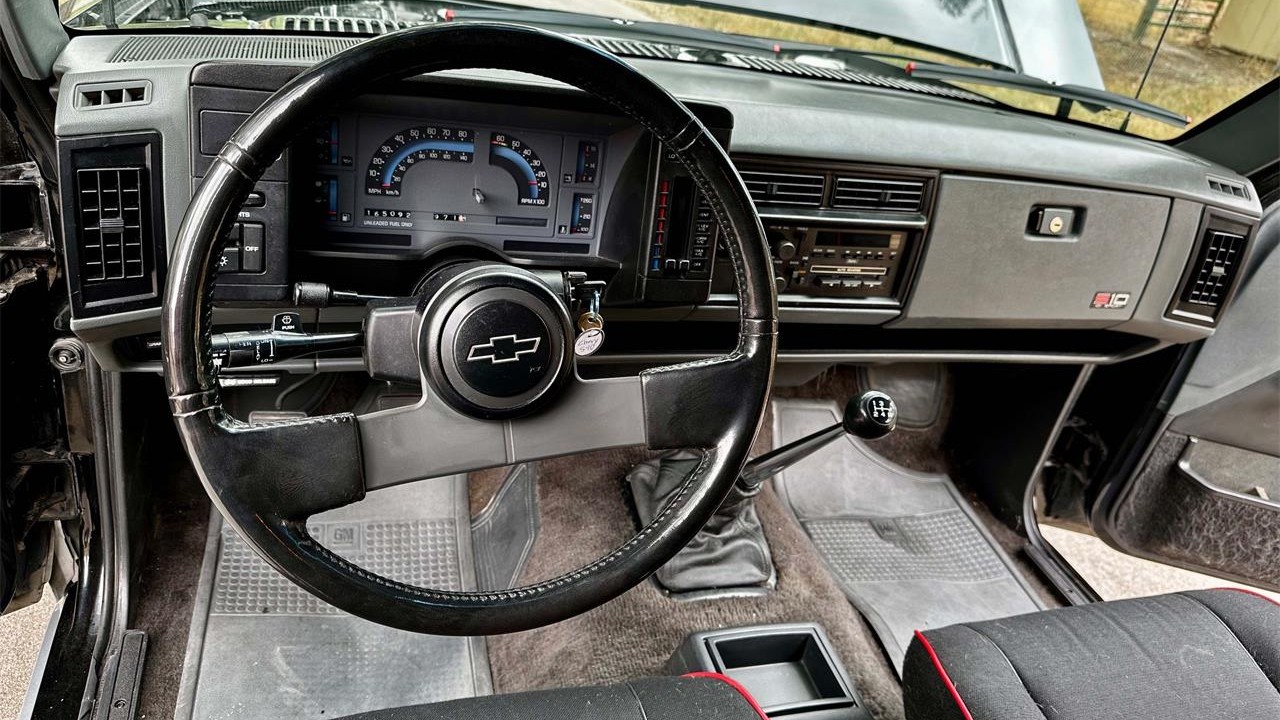
The S-10 compact pickup was officially launched in 1981 for the 1982 model year, and it served as a replacement for the Chevrolet LUV compact pickup, which had been imported from Isuzu and rebadged accordingly. The truck was available in regular-cab and extended-cab (or “Maxi-Cab”) variants. A Sport package was available for two-wheel-drive models. It came with power steering, heavy-duty front and rear shocks, and 15-inch Rally wheels.
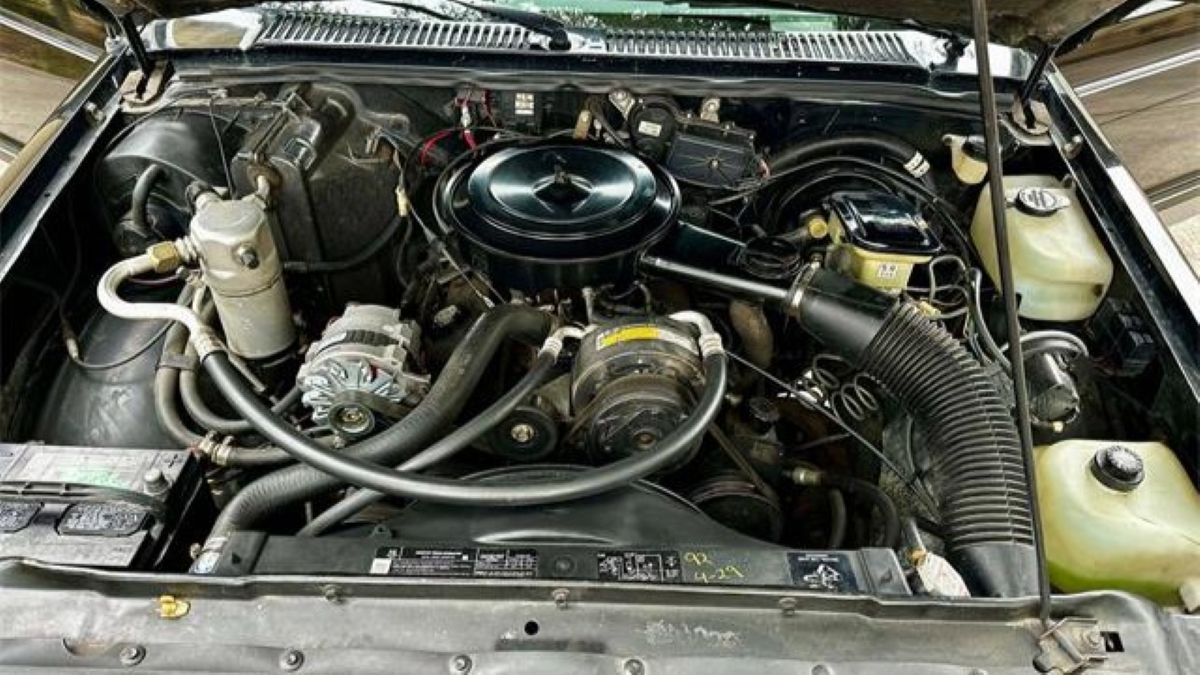
A few different engines were offered on the S-10, and this one is powered by a 2.8-liter V6 mated to a four-speed manual transmission. The odometer shows 165,092 miles, and the listing says that the engine, clutch, and brakes are in strong working order. “Runs and drives extremely well,” the seller says. “It’s a solid, original survivor with a great history. These first-gen S-10s are getting harder to find in this kind of condition, especially with a manual transmission and the Sport trim.”
Included in the documentation is a certified appraisal dated September 1, 2025, which valued the truck at $12,000. The asking price is $12,500.
Click here to view this Pick of the Day on ClassicCars.com
The 1990s witnessed a surge in automotive innovation, with manufacturers introducing models that combined performance, style, and technology. However, in some instances, the base versions of these vehicles offered a more engaging and reliable driving experience than their upgraded counterparts. Factors such as lighter weight, enhanced reliability, and a purer driving feel contributed to the base models’ appeal. This phenomenon highlights that, in the realm of automotive design, more isn’t always better. Let’s delve into 15 such cars from the 90s where the base model outshone its upgrade.
The 1980s marked a transformative period in the automotive industry, as manufacturers sought to blend performance, technology, and versatility to appeal to a diverse consumer base. This era witnessed the emergence of vehicles that combined features from various segments, resulting in unique and sometimes unconventional designs. Technological advancements and shifting consumer preferences drove automakers to experiment with multipurpose vehicles, leading to some memorable and ambitious models. (en.wikipedia.org)
Between the 1970s and 1990s, car dealerships offered a range of unique dealer-installed options that reflected the automotive culture and consumer trends of the era. These features, often designed to enhance performance, comfort, or style, sometimes led to unexpected outcomes. Exploring these options provides insight into the innovative and sometimes questionable choices made by both manufacturers and consumers during this period.
Three years ago, I spent a week driving the all-electric 2022 Hyundai Ioniq 5. It was a daring retro-futuristic design wrapped around an airy, spacious cabin and propelled by a powerful pair of electric motors. To make a long story short, I loved it. Would the thoroughly updated 2025 model be just as wonderful? There was only one way to find out.
Prices for the 2025 Ioniq 5 start at $42,600 for the entry-level SE Standard Range model and top out at $54,300 for the Limited with rear-wheel drive. My dual-motor Limited test vehicle came standard with HTRAC all-wheel drive, a V-shaped LED accent bar, 20-inch wheels, a large fixed glass roof panel with a retractable shade, a head-up display, heated and ventilated front seats, Bose audio, a 12.3-inch digital instrument cluster, a 12.3-inch infotainment touchscreen, and more. Adding carpeted floor mats and the $1,000 Gravity Gold Matte paint raised the total price to $60,785.
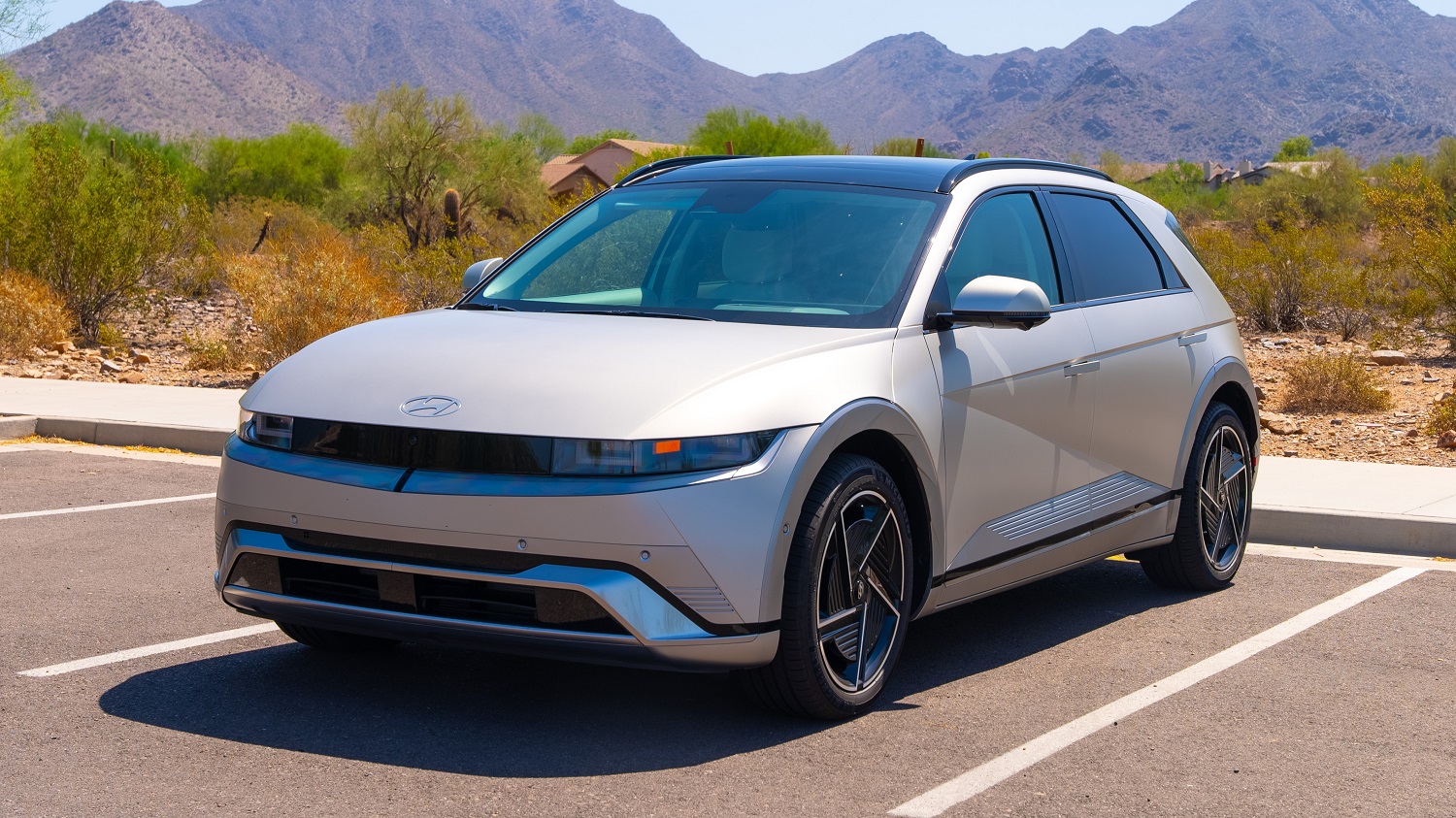
As part of the Ioniq 5’s mid-cycle refresh, Hyundai made comprehensive visual, technological, and powertrain changes. The immediately recognizable 8-bit exterior was not only updated with new bumpers, a rear wiper and washer, and fresh paint colors, but with structural enhancements to the doors, B-pillars, and body as well. Luckily, none of those alterations were too extreme – the Ioniq 5 is still as quirky and distinctive as before.
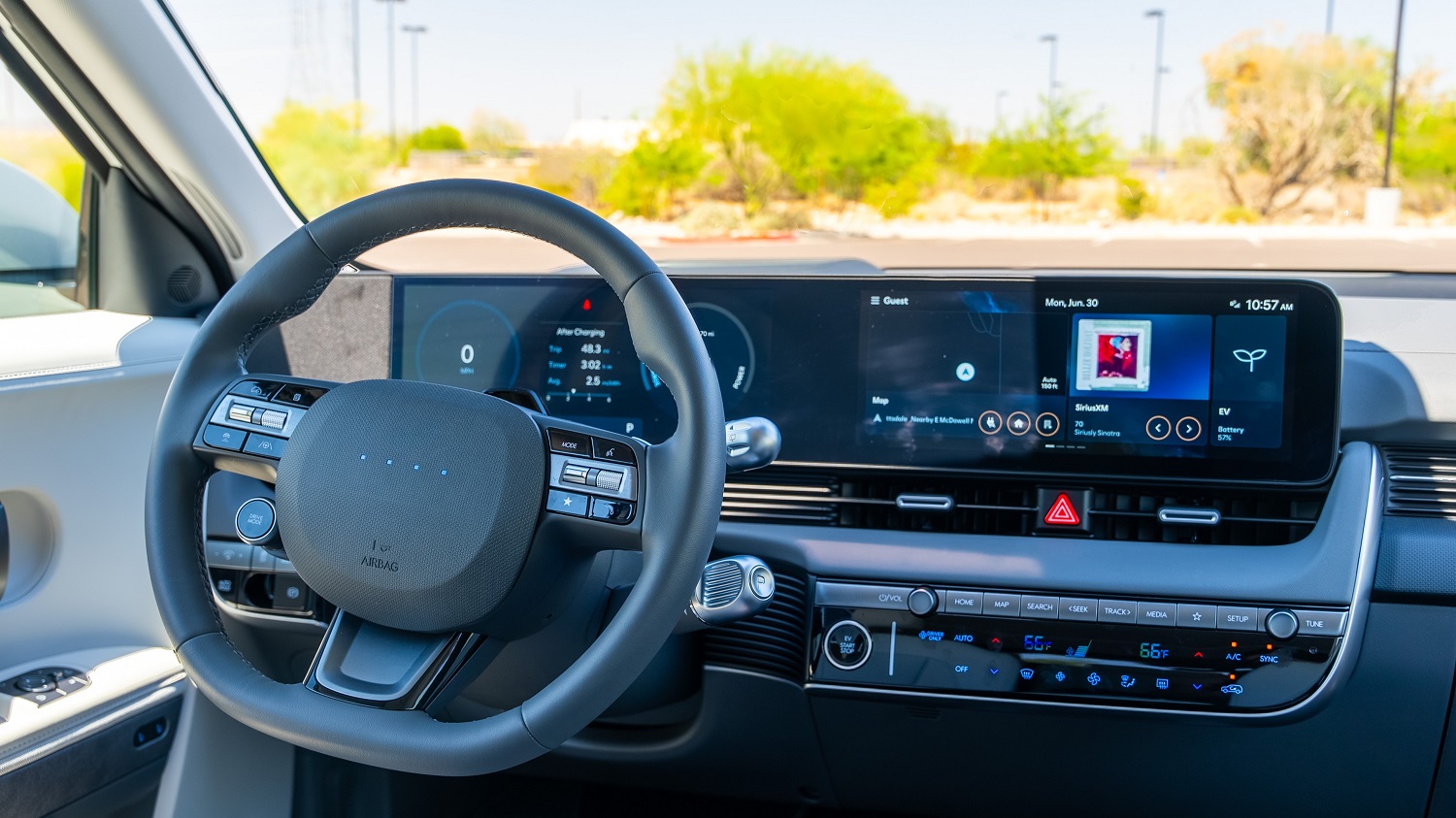
The cabin comes with new features that make it more convenient. In properly equipped models such as my Limited AWD test vehicle, the sliding center console now has a wireless phone charging pad as well as physical controls for the heated and ventilated front seats and the redesigned heated steering wheel. Too bad Hyundai didn’t use buttons and switches for the new HVAC controls, which are touch-sensitive and difficult to use on the fly.
Two of the most significant updates to the Ioniq 5 are the switch to higher-capacity lithium-ion battery packs and the standard NACS (North American Charging Standard) charging port, which enables the Ioniq 5 to use Tesla Supercharger stations. The Limited AWD has a 74-kW front and a 165-kW rear electric motor, which produce a total of 320 horsepower and 446 lb-ft of torque. According to the EPA, it’s capable of returning 98 MPGe combined. On a full charge, the Limited AWD can cover 269 miles, a slight increase from its previous range of 260. When connected to 250+kW power, the battery goes from 10 to 80 percent full in 20 minutes. Unfortunately, the Electrify America station closest to my house was much slower, taking the battery from 10 to 80 percent in 53 minutes. Let’s just say I spent a lot of time browsing the nearby Walmart’s Hot Wheels and Lego aisles that afternoon.
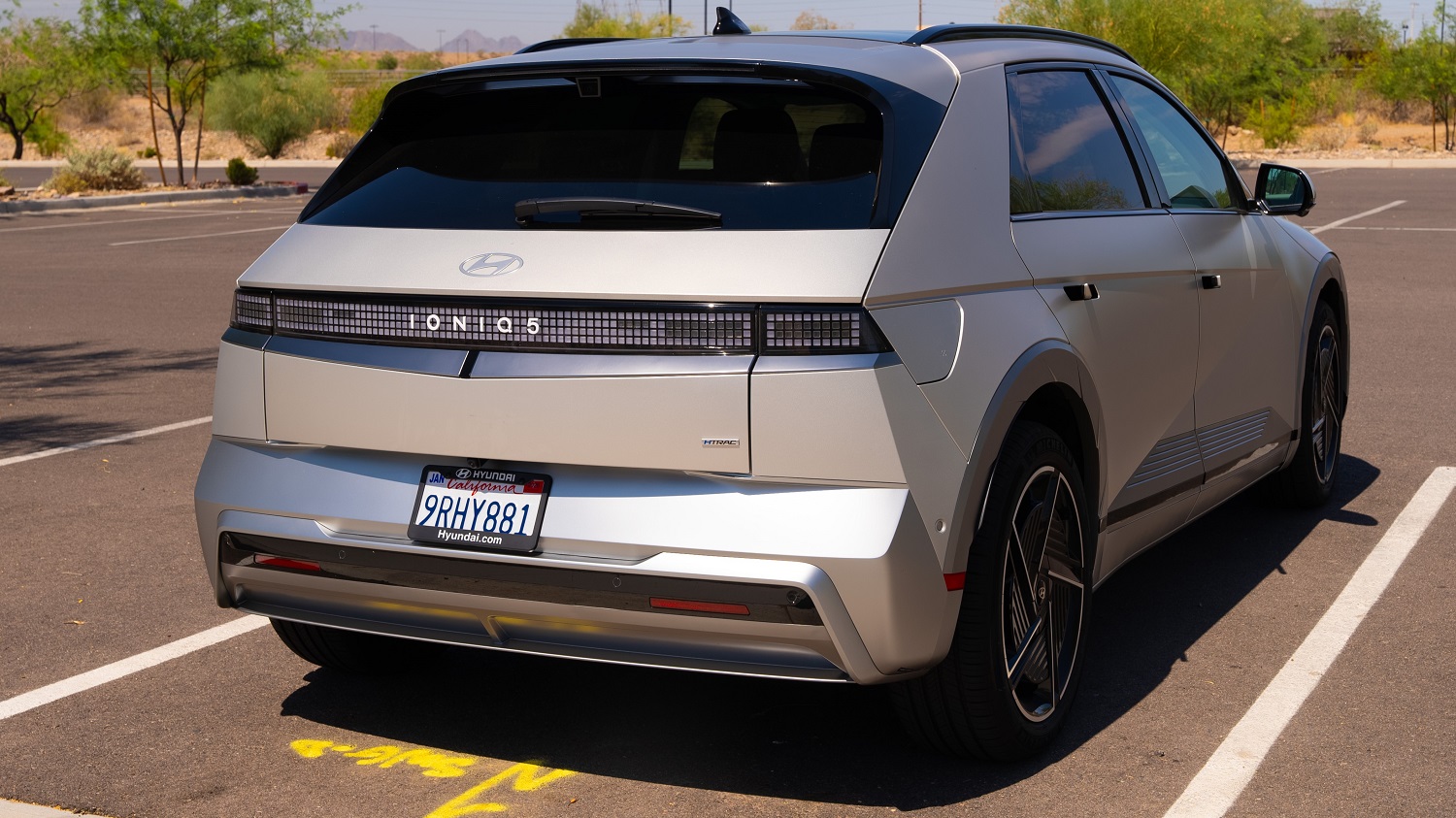
On the road, the Ioniq 5’s cabin was just as soothing and airy as it was in the 2022 model. Although the suspension had a touch of firmness, it didn’t detract from the serene driving experience. When I needed to pick up the pace, the dual motors carried me forward at a brisk pace. I quickly realized that when Hyundai developed the new Ioniq 5, it didn’t “fix” something that wasn’t broken in the first place.
To learn more about the 2025 Hyundai Ioniq 5 Limited AWD, check out my review video below.
Are you a Mustang fan but feel you don’t measure up running against those widebody Dodge Challengers and Chargers? Do you feel that Ford fans have had sand kicked in their faces for too long, yet the Mustang GTD is sold out? You now have another widebody solution (and it doesn’t require you to send in a stamp to Charles Atlas) as Trick Rides has previewed its first widebody Mustang—not only is it a ’69, but it also is made completely out of carbon fiber.
Trick Rides has reimagined the 1969 Mustang “SportsRoof” engineered entirely in CAD with advanced 3D-scanning technology for “aerospace-level precision.” This interpretation of Ford’s pony car features “advanced aerodynamics” and panel fitment that would make a Lexus fan blush. Of course, carbon fiber weighs less, too.
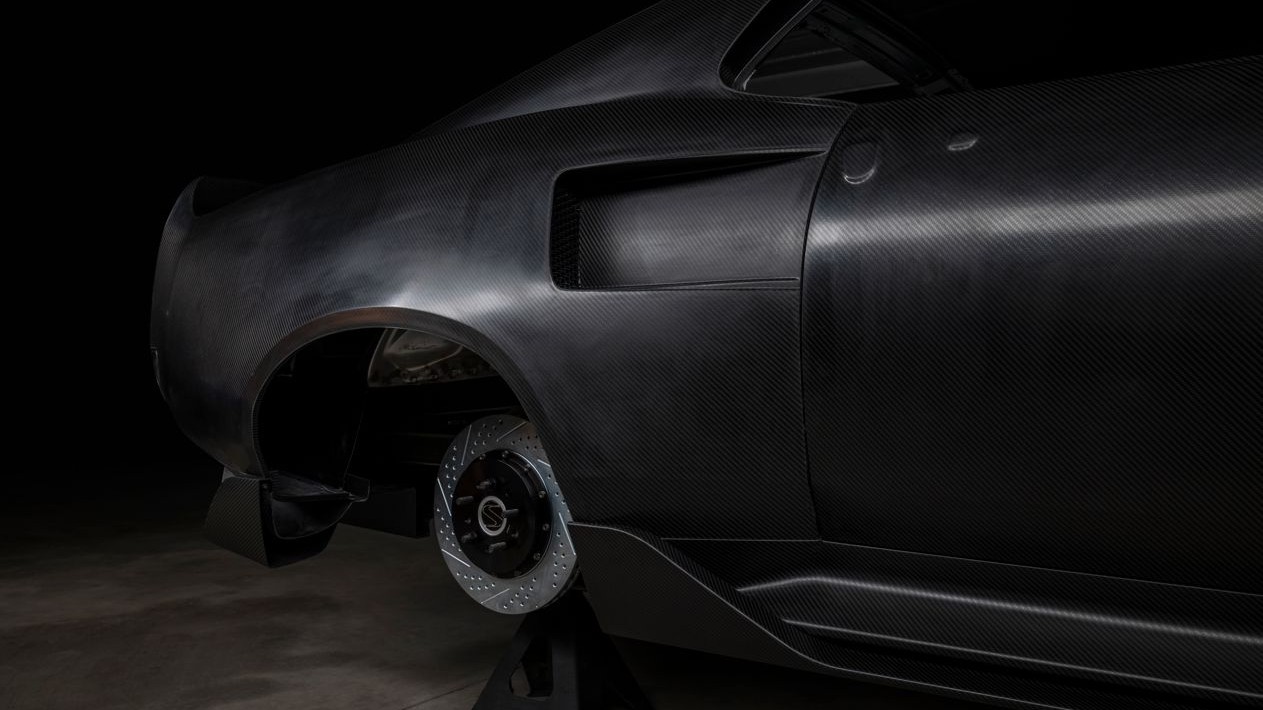
This body will be the basis of “Scorched,” a custom 1969 Mustang created in collaboration with TMI Products. The latter company contributes with a custom interior that includes all-new high-back seating, German square-weave carpeting, custom-bade door panels, console, and Alcantara headliner—all made and installed in America!
“Our latest creation, ‘Scorched,’ represents a new era in muscle car engineering and design,” says Jason Engel, founder of Trick Rides. “Our goal was to push the boundaries of what a resto-mod could be by adding modern twists to a timeless classic. The result showcases what is possible when modern engineering meets iconic heritage.”
If you’re interested in buying your own Scorched, you can choose from several engine options: a VMP-supercharged 5.0-liter Coyote V8, 429 cubic-inch Kaase “Boss Nine,” or Ford Performance 427 cubic-inch V8, all featuring a custom exhaust system with Stainless Works headers and MagnaFlow mufflers. A TREMEC T-56 six-speed manual will make your left leg and right arm larger.
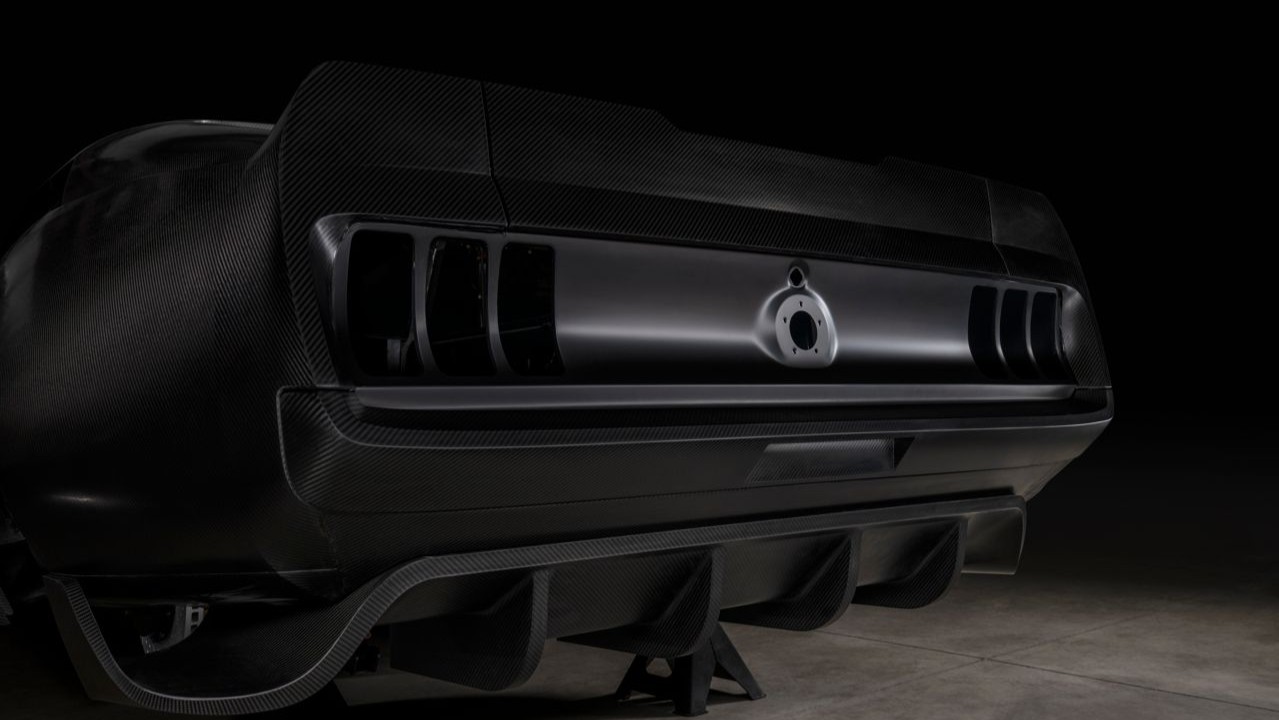
The chassis comes from the Roadster Shop and boasts a Fox coilover independent front suspension, parallel four-link rear, and oversized sway bars for increased stability. Three-piece Forgeline wheels are wrapped in Continental ExtremeContact Force tires, while brakes are custom six-piston Baer Brakes.
The first completed vehicle will make its official debut in the TMI booth (#24477) in Central Hall at the SEMA Show this November in Las Vegas. Yet you don’t have to wait several months to find out all about this special vehicle—simply visit the Trick Rides website to learn how you can buy one.